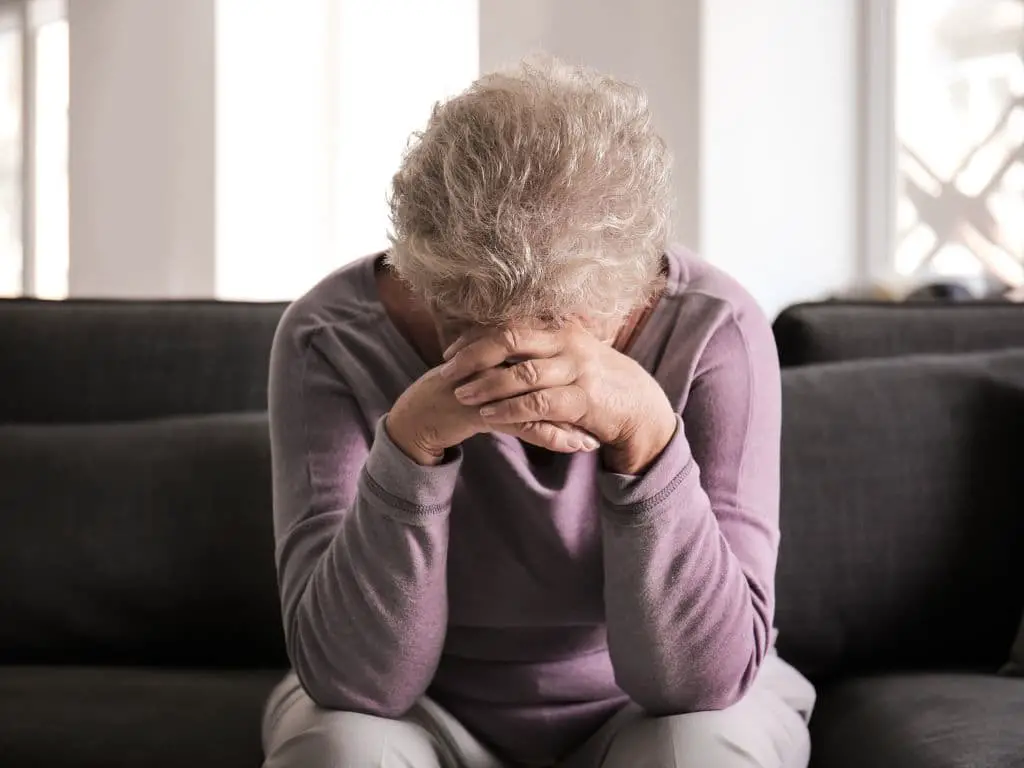What Is the Best Antidepressant for an Elderly Person?
The best antidepressant for an elderly person depends on their individual health status and the presence of any co-existing conditions, but selective serotonin reuptake inhibitors (SSRIs) such as citalopram, escitalopram, and sertraline are generally considered to have the best safety profile. These medications have a lower risk of side effects and drug-drug interactions compared to other antidepressants. However, it’s important to start with a lower dose and monitor the patient closely for any side effects or changes in their condition.
Selective serotonin reuptake inhibitors (SSRIs) such as citalopram, escitalopram, and sertraline are often recommended due to their lower anticholinergic effects and lower potential for drug-drug interactions. Other newer antidepressants like buproprion, mirtazapine, moclobemide, and venlafaxine (a selective norepinephrine reuptake inhibitor or SNRI) are also considered relatively safe for the elderly.
When prescribing antidepressants for elderly patients, healthcare providers often start with a lower dose than they would for younger adults, due to changes in hepatic metabolism with aging, concurrent medical conditions, and potential drug-drug interactions. The dose is then gradually increased as tolerated to reach an effective therapeutic level.
Tricyclic antidepressants and monoamine oxidase inhibitors (MAOIs) are generally not considered first-line treatments for depression in the elderly due to their potential side effects and interactions with other medications. However, they may be used in certain cases where other treatments have not been effective.
It’s also important to note that treatment for depression in the elderly often involves more than just medication. Psychotherapy and other non-pharmacological treatments can also be effective. In severe or treatment-resistant cases, electroconvulsive therapy (ECT) may be considered.
Ultimately, the best antidepressant for an elderly person is one that effectively manages their symptoms of depression, is well-tolerated, and fits well with their overall treatment plan. This decision should be made in consultation with a healthcare provider who is familiar with the individual’s health history and current situation.

What Are the Main Reasons for Depression in the Elderly?
Depression in the elderly is a common mental health issue, with a prevalence rate of 14% to 20% in the elderly community, and higher rates in hospitals and long-term care facilities. There are several main reasons for depression in the elderly, which can be categorized into predisposing and precipitating risk factors.
Predisposing risk factors include being female, being widowed or divorced, having a history of depression, experiencing brain changes due to vascular problems, having major physical and chronic disabling illnesses, taking multiple medications (polypharmacy), excessive alcohol use, social disadvantage and low social support, caregiving responsibilities for a person with a major disease such as dementia, and certain personality types.
Precipitating risk factors include recent bereavement, moving from home to another place such as a nursing home, adverse life events such as loss, separation, or financial crisis, chronic stress caused by declining health, family or marital problems, social isolation, and persistent sleep difficulties.
Depression in the elderly is often associated with functional decline, increased care needs, family stress, comorbid physical illnesses, reduced recovery from illnesses such as stroke, and premature death due to suicide and other causes.
Depression in this population often goes undertreated and untreated due to challenges in identifying and diagnosing depression, such as communication difficulties due to hearing or cognitive impairment, physical symptoms similar to those of depression caused by other comorbidities, and stigma associated with mental illness.
What Are the Considerations for Prescribing Antidepressants in the Elderly?
Prescribing antidepressants in the elderly requires careful consideration due to various factors such as the patient’s overall health, the presence of comorbidities, potential drug-drug interactions, and age-related changes in drug metabolism.
Depression in the elderly is a common and serious condition. Symptoms include low mood, reduced interest and energy, poor sleep and appetite, and preoccupation with health problems. It can lead to functional decline, increased care needs, higher likelihood of physical illnesses, reduced recovery from illness, and premature death due to suicide and other causes.
When diagnosing depression in the elderly, it is important to consider the criteria for a major depressive disorder according to the DSM-IV-TR. However, minor depressive episodes are also common in the elderly and can have the same negative effects as major depression.
In terms of treatment, both pharmacological and nonpharmacological strategies are recommended. Antidepressants are effective in treating depression in the elderly, with similar efficacy to younger adults. However, older adults may require higher doses to achieve a therapeutic effect.
When selecting an antidepressant, it is important to consider the patient’s previous response to treatment, the type of depression, the patient’s other medical problems, the patient’s other medications, and the potential risk of overdose. Antidepressants with lower anticholinergic effects are generally preferred due to their better tolerance in patients with cardiovascular disease.
The selective serotonin reuptake inhibitors (SSRIs) and the newer antidepressants buproprion, mirtazapine, moclobemide, and venlafaxine are all relatively safe in the elderly. However, they can cause side effects such as nausea, dry mouth, insomnia, agitation, diarrhea, excessive sweating, and, less commonly, sexual dysfunction.
When prescribing antidepressants to the elderly, it is recommended to start with half the dose prescribed for a younger adult to minimize side effects. The dose should be increased regularly as tolerated at 1- to 2-week intervals to reach a therapeutic dose more quickly.
If there is no improvement in depressive symptoms after 4 weeks or insufficient improvement after 8 weeks on the maximum recommended or tolerated dose of an antidepressant, then the antidepressant should be changed. If significant improvement but not full remission is achieved after 4 weeks on the optimized antidepressant, add-on treatment should be considered.
In addition to medications, other therapies such as psychotherapy and neurostimulation can be considered. Electroconvulsive therapy (ECT) is recommended as
a first-line treatment for psychotic depression in the elderly, as it has shown a recovery rate of over 80% and a faster and fuller response compared to medication. ECT is also considered as an alternate treatment for severe depression, particularly in cases where a patient has failed to respond to two antidepressants or is acutely suicidal. ECT is a relatively safe, well-tolerated, and effective treatment for depression in the elderly and has been associated with better treatment outcomes and fewer side effects than medications.
In recent years, newer antidepressant agents have become available, including duloxetine and desvenlafaxine, both selective norepinephrine reuptake inhibitors (SNRIs). Duloxetine has shown efficacy in treating depression in the elderly at daily doses of 60 mg. However, more research is needed on the use of desvenlafaxine in the elderly.
Atypical antipsychotics used as add-on therapy in the treatment of depression also show some promise. However, their use in older adults poses potential risks including extrapyramidal symptoms, falls, sedation, weight gain, dyslipidemia, and diabetes. There is also an increased risk of death, largely due to cerebrovascular events, among elderly demented patients compared with placebo.
Commonly Prescribed Antidepressants for the Elderly
Selective Serotonin Reuptake Inhibitors (SSRIs)
Selective Serotonin Reuptake Inhibitors (SSRIs) are a class of drugs that are typically used as antidepressants in the treatment of major depressive disorder and anxiety disorders. They function by increasing the level of serotonin, a neurotransmitter, in the brain. Serotonin is believed to regulate mood, social behavior, appetite, digestion, sleep, memory, and sexual desire and function. SSRIs limit the reabsorption (reuptake) of serotonin into neurons, thus increasing the level of serotonin in the synaptic cleft available to bind to the postsynaptic receptor. This results in more serotonin being available to improve transmission of messages between neurons.
SSRIs are considered relatively safe and typically cause fewer side effects than other types of antidepressants. Common side effects of SSRIs include nausea, dry mouth, insomnia, somnolence, agitation, diarrhea, excessive sweating, and, less commonly, sexual dysfunction. SSRIs are often the first choice of medication for depression and anxiety disorders due to their high efficacy and relative safety.
In the context of treating elderly patients, SSRIs such as citalopram, escitalopram, and sertraline are considered to have the best safety profile. These have the lowest potential for drug-drug interactions based on their cytochrome P-450 interactions. However, in elderly patients, there is an increased risk of developing hyponatremia secondary to a syndrome of inappropriate antidiuretic hormone secretion, particularly with SSRIs and venlafaxine. This is seen in approximately 10% of patients taking antidepressants.
It is important to note that fluoxetine, another SSRI, is generally not recommended for use in the elderly because of its long half-life and prolonged side effects. Similarly, paroxetine is typically not recommended for use in the elderly as it has the greatest anticholinergic effect of all the SSRIs.
Serotonin-Norepinephrine Reuptake Inhibitors (SNRIs)
Serotonin-Norepinephrine Reuptake Inhibitors (SNRIs) are a class of antidepressant drugs that treat depression by increasing the levels of serotonin and norepinephrine, two neurotransmitters in the brain. These neurotransmitters are known to play an important role in stabilizing mood. SNRIs work by inhibiting the reuptake, or absorption, of these neurotransmitters into nerve cells, thereby increasing their availability in the brain.
SNRIs are often prescribed for the treatment of major depressive disorder, but they can also be used for other mental health conditions such as anxiety disorders and chronic pain syndromes. Common SNRIs include venlafaxine (Effexor), duloxetine (Cymbalta), and desvenlafaxine (Pristiq).
In elderly patients, SNRIs are considered to be relatively safe and well-tolerated. They have lower anticholinergic effects than older antidepressants, making them a suitable choice for patients with cardiovascular disease. However, they can cause certain side effects such as nausea, dry mouth, insomnia, agitation, diarrhea, and excessive sweating. There is also an increased risk of hyponatremia, a condition characterized by low sodium levels in the blood, particularly in elderly patients and those taking other medications such as diuretics.
When prescribing SNRIs to elderly patients, healthcare providers need to consider various factors including the patient’s other medical conditions, other medications they are taking, and their risk of overdose. The dosage for elderly patients is typically started at half of the dose prescribed for younger adults to minimize side effects. Regular follow-up visits are necessary to monitor treatment response, assess for side effects, and adjust the dosage accordingly.
Tricyclic Antidepressants (TCAs)
Tricyclic antidepressants (TCAs) are a class of medications that were commonly used as first-line treatment for depression before the development of selective serotonin reuptake inhibitors (SSRIs). They work by increasing the levels of certain chemicals in the brain that help elevate mood.
However, in the elderly, TCAs are no longer considered first-line agents due to their potential for side effects. These can include postural hypotension, which can contribute to falls and fractures, cardiac conduction abnormalities, and anticholinergic effects such as delirium, urinary retention, dry mouth, and constipation.
Certain medical conditions common in the elderly, such as dementia, Parkinson’s disease, and cardiovascular problems can also be worsened by a tricyclic antidepressant. If a TCA is chosen as a second-line medication, nortriptyline and desipramine are the best choices as they are less anticholinergic.
Before starting a patient on a TCA, it is recommended to obtain an ECG and postural blood pressure reading, and to monitor TCA blood levels, as they can be associated with more toxicity and high blood levels can occur despite low doses in some patients who are slow metabolizers.
Given their side effect profile and high rates of drug-drug interactions, tricyclic antidepressants are not considered first- or even second-line agents for depression in the elderly.
Monoamine Oxidase Inhibitors (MAOIs)
Monoamine oxidase inhibitors (MAOIs) are a class of drugs that inhibit the activity of one or both monoamine oxidase enzymes: monoamine oxidase A (MAO-A) and monoamine oxidase B (MAO-B). These enzymes are responsible for breaking down monoamine neurotransmitters such as dopamine, norepinephrine, and serotonin in the brain. By inhibiting their activity, MAOIs increase the availability of these neurotransmitters, which can help alleviate symptoms of depression.
MAOIs are one of the oldest classes of antidepressants and can be particularly effective in treating atypical depression. However, they are not typically considered first-line treatments due to potential side effects and dietary restrictions. They can interact with certain foods and other medications, leading to dangerously high blood pressure, a condition known as hypertensive crisis.
In the context of treating depression in the elderly, MAOIs are not generally considered first- or even second-line agents due to their side effect profile and high rates of drug-drug interactions. Nonetheless, they may be used in certain cases where other treatments have failed. As with all antidepressants, the use of MAOIs should be closely monitored by a healthcare professional.
Atypical Antidepressants
Atypical antidepressants are a group of antidepressant medications that do not fit into the other established classes such as selective serotonin reuptake inhibitors (SSRIs), tricyclic antidepressants (TCAs), and monoamine oxidase inhibitors (MAOIs). These drugs each have a unique mechanism of action and chemical structure, which differentiates them from other classes of antidepressants.
Some of the atypical antidepressants include bupropion, mirtazapine, and venlafaxine. Bupropion is known to affect both norepinephrine and dopamine, mirtazapine increases norepinephrine and serotonin in the brain, while venlafaxine inhibits the reuptake of both serotonin and norepinephrine.
These drugs are generally well tolerated by patients and have lower anticholinergic effects than older antidepressants, making them suitable for use in patients with cardiovascular disease. However, they can also carry certain risks and side effects. For instance, there is an increased risk of hyponatremia (low sodium levels) associated with SSRIs and venlafaxine, and an increased risk of gastrointestinal bleeding associated with SSRIs.
Newer atypical antidepressants have also been developed, including duloxetine and desvenlafaxine, both of which are selective norepinephrine reuptake inhibitors (SNRIs). However, there is a lack of geriatric-specific research on these newer drugs.
Atypical antipsychotics such as risperidone, olanzapine, and aripiprazole have also been used as add-on therapy in the treatment of depression. However, their use in older adults can pose certain risks, including extrapyramidal symptoms, falls, sedation, weight gain, dyslipidemia, and diabetes. There is also a black box warning associated with these drugs due to an increased risk of death among elderly demented patients.
Despite these risks, atypical antidepressants can be an effective treatment for severe or refractory depression in the elderly who fail to respond fully to other medications. They are also recommended for the treatment of psychotic symptoms associated with depression at the lowest doses for symptom control.
Potential Side Effects and Risks of Antidepressants in the Elderly
Antidepressants can be an effective treatment for depression in the elderly, but they also come with potential side effects and risks that are particularly relevant to this age group. Antidepressants can cause side effects such as nausea, dry mouth, insomnia, agitation, diarrhea, excessive sweating, and in some cases, sexual dysfunction. Due to changes in renal function associated with aging, elderly patients are at an increased risk of developing hyponatremia, a condition characterized by low sodium levels in the blood. This is particularly associated with selective serotonin reuptake inhibitors (SSRIs) and venlafaxine.
In addition, there is an increased risk of gastrointestinal bleeding associated with SSRIs, particularly in higher-risk individuals, such as those with peptic ulcer disease or those taking anti-inflammatory medications. Some antidepressants, like fluoxetine and paroxetine, have higher risks of drug-drug interactions, which can be particularly problematic in elderly patients who are often on multiple medications.
Tricyclic antidepressants, while effective, can cause side effects like postural hypotension, which can contribute to falls and fractures, cardiac conduction abnormalities, and anticholinergic effects such as delirium, urinary retention, dry mouth, and constipation. They can also exacerbate certain medical conditions common in the elderly, such as dementia, Parkinson’s disease, and cardiovascular problems.
Monoamine oxidase inhibitors (MAOIs) are generally not recommended for use in the elderly due to their side effect profile and high rates of drug-drug interactions. Newer antidepressants like duloxetine and desvenlafaxine, as well as atypical antipsychotics used as add-on therapy, have shown promise, but more research is needed, particularly in geriatric populations. Atypical antipsychotics also carry risks of extrapyramidal symptoms, falls, sedation, weight gain, dyslipidemia, diabetes, and increased risk of death due to cerebrovascular events.
It’s important to note that stopping some medications suddenly can lead to a withdrawal syndrome that includes anxiety, insomnia, and flu-like symptoms, which can be prevented with gradual tapering. Overall, while antidepressants can be an important tool in treating depression in the elderly, careful consideration of the potential side effects and risks is crucial.
What Is the Best Antidepressant for Elderly With Dementia?
There is no universally “best” antidepressant for elderly patients with dementia as the choice of medication depends on the individual’s overall health, the presence of other medical conditions, and their response to treatment. However, SSRIs like citalopram, escitalopram, and sertraline are often considered safer due to their lower potential for drug-drug interactions and less anticholinergic effects. If there is significant cognitive impairment, the Cornell Scale for Depression in Dementia (CSDD) is the recommended tool for assessing depression, and any chosen treatment should be closely monitored for side effects and effectiveness.
What Is the Safest Antidepressant for the Elderly?
The safest antidepressants for the elderly are typically selective serotonin reuptake inhibitors (SSRIs) such as citalopram, escitalopram, and sertraline due to their lower potential for drug-drug interactions and minimal anticholinergic effects. Other newer antidepressants like bupropion, mirtazapine, moclobemide, and venlafaxine are also considered safe for elderly patients. However, it’s important to monitor for possible side effects such as hyponatremia and gastrointestinal bleeding, particularly in patients with other medical conditions or those taking other medications.
What Are Other Treatment Options for Depression in the Elderly?
Other treatment options for depression in the elderly, beyond pharmacological interventions, include psychotherapy, neurostimulation, and electroconvulsive therapy (ECT).
Psychotherapy, including cognitive-behavioral therapy (CBT) and interpersonal therapy (IPT), can be effective in treating depression in the elderly. CBT focuses on helping individuals change negative thought patterns and behaviors, while IPT focuses on improving interpersonal relationships and social functioning. These therapies can be used alone or in conjunction with antidepressant medications.
Neurostimulation therapies, such as transcranial magnetic stimulation (TMS) or vagus nerve stimulation (VNS), may be considered in cases of treatment-resistant depression. These therapies work by using magnetic fields or electrical impulses to stimulate specific areas of the brain involved in mood regulation.
Electroconvulsive therapy (ECT) is often considered a first-line treatment for severe or psychotic depression in the elderly. ECT involves passing a carefully controlled electric current through the brain to trigger a brief seizure, which can help to reset the brain’s natural mood regulation processes. ECT has been associated with better treatment outcomes and fewer side effects than medications in the elderly population. It is also considered when a patient has failed to respond to two antidepressants, is acutely suicidal, or is unable to take medications due to medical problems.
Atypical antipsychotics may also be considered as an add-on therapy in cases of severe or refractory depression. However, these medications must be used with caution due to potential side effects and risks, particularly in the elderly population.
In all cases, individual patient factors, including the severity of depression, comorbid medical conditions, and the patient’s personal preferences and values, should be taken into account when deciding on the most appropriate treatment approach.






